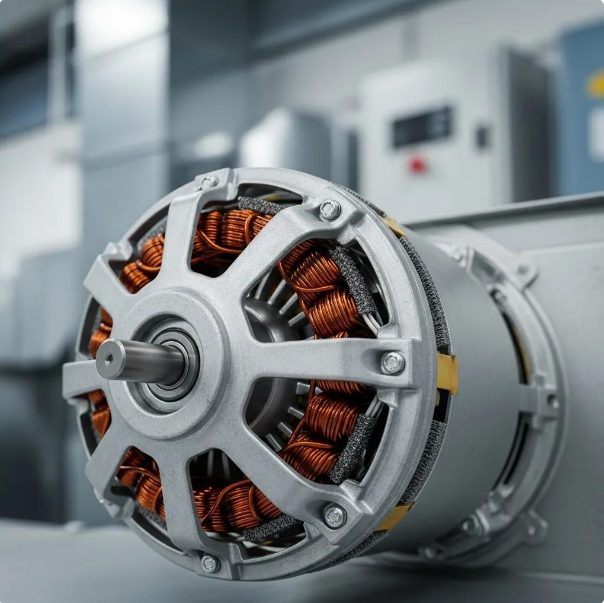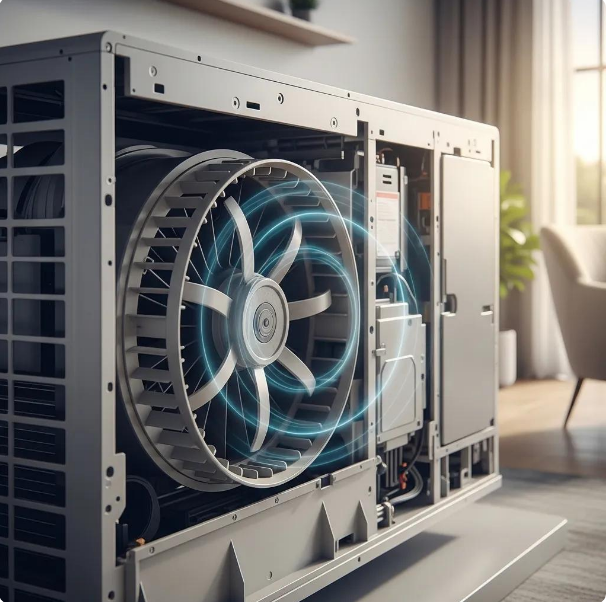Cheapest and Most Efficient Air Conditioning Systems to Run in Australia


Government Rebates Now Available on Energy-Efficient Air Conditioners when Replacing your Gas Heater.
The cheapest air conditioning refers to systems with the lowest operational costs over time, considering energy consumption and maintenance requirements. Efficient air conditioning systems provide optimal cooling or heating while consuming minimal energy. In air conditioning, efficiency is measured by how effectively the system converts electrical energy into cooling or heating power, often expressed as the Energy Efficiency Ratio (EER) or Coefficient of Performance (COP).
Australia's most cost-effective and efficient air conditioning systems are typically split system reverse cycle air conditioners with high energy star ratings. Due to their energy-efficient operation, these systems offer affordable purchase prices and low running costs. Conversely, central ducted systems are generally the most expensive to run, particularly in larger homes, due to their higher energy consumption and the need to cool or heat larger spaces.
The main factors influencing the electricity consumption of air conditioning systems include the unit's size and efficiency rating, the area being cooled or heated, insulation quality, outdoor temperature, and usage patterns.
What is Air Conditioning System?
An air conditioning system is a mechanical device designed to control the enclosed space's temperature, humidity, and air quality. Its primary purpose is to create a comfortable indoor environment by removing heat and moisture from the air. Air conditioning systems work on the principle of vapour compression, where a refrigerant circulates through the system, absorbing heat from indoor air and releasing it outside. There are various air conditioning systems, including split systems, ducted systems, window units, and portable air conditioners, each suited to different needs and spaces.
What are the different types of air conditioning systems?
The main types of air conditioning systems include:
- Split systems: These are generally cheaper to run and suited for single rooms or open-plan areas.
- Ducted systems: These are more expensive to operate but ideal for whole-home cooling.
- Window units: They are cheaper to purchase but less efficient to run than split systems.
- Portable air conditioners: These are the least expensive to buy but often the most costly to operate due to lower efficiency.
- Multi-split systems: These are more expensive than single-split systems but are efficient for cooling multiple rooms.
The cost differences are primarily due to variations in energy efficiency, installation complexity, and the area they can effectively cool or heat.
What are the Cheapest Air Conditioning Systems to Buy?
The cheapest air conditioning systems are typically window units and portable air conditioners. These systems are less expensive due to their simpler design and easier installation process. However, it's important to note that the cheapest purchasing systems are often not the most cost-effective. Cheaper units generally have lower energy efficiency ratings, which can lead to higher electricity bills over time.
What are the Cheapest Air Conditioning System Brands?
Some of Australia's more affordable air conditioning brands include Kelvinator, Midea, and TCL. These brands offer budget-friendly options without compromising too much on quality. While they may not have all the advanced features of premium brands, they provide reliable cooling solutions for many households. It's important to note that even within these brands, a range of models can have varying efficiency ratings and features.
What are the Most Efficient Air Conditioning Systems?
Efficient air conditioning systems provide the desired cooling or heating effect while consuming minimal energy. The most efficient systems typically have high Seasonal Energy Efficiency Ratio (SEER) ratings and employ inverter technology.
According to a 2020 study by Energy Rating Australia, reverse cycle split system air conditioners with seven or more stars can use up to 70% less energy than a 2-star model of the same capacity. For example, a 7-star 2.5kW split system air conditioner can use as little as 270 kWh per year, compared to over 900 kWh for a 2-star model of the same size.
What is Energy Efficient on Air Conditioning System?
Energy efficiency in air conditioning systems refers to the cooling or heating output ratio to the energy input. Features that contribute to energy efficiency include:
- High SEER rating: Indicates the system's overall efficiency over a typical cooling season.
- Inverter technology: Allows the compressor to run at variable speeds, reducing energy waste.
- Variable speed operation: Adjusts the system's output based on current conditions.
- Proper sizing: Ensures the system isn't overworked or underutilised.
- Clean air filtration: Maintains system efficiency by preventing dust build-up.
- Smart features: Allow for optimised operation based on usage patterns and preferences.
How much does air conditioning cost to run in Australia?
The cost of running an air conditioner in Australia varies significantly depending on the type of system, its size, efficiency rating, usage patterns, and local electricity rates. According to a 2021 study by Canstar Blue, the average cost to run a medium-sized (5kW) split system air conditioner in Australia is approximately $0.25 to $0.35 per hour.
This can translate to annual costs for residential units ranging from $200 for efficient systems used moderately to over $1,000 for less efficient systems used frequently. Commercial units, typically more extensive and used more intensively, can cost significantly more to run.
These figures are based on average electricity rates and usage patterns across Australia. Actual costs may vary depending on specific circumstances and location.
How much does air conditioning cost to run in Melbourne?
The cost of running an air conditioner in Melbourne varies seasonally due to the city's variable climate. During summer, a typical 5kW split system air conditioner might cost around $0.30 to $0.40 per hour, based on average usage patterns and a power consumption 1.5kW/h.
Electricity rates in Melbourne average around $0.20 to $0.30 per kWh, which significantly influences the final cost. During peak summer months, a household might spend $2 to $3 daily on air conditioning, assuming 6-8 hours of use. However, actual costs can vary widely based on individual usage patterns and the specific efficiency of the unit.
What is the running cost for a split air conditioning system in Australia?
The running cost for a split air conditioning system in Australia typically ranges from $0.20 to $0.50 per hour, depending on capacity, SEER rating, usage patterns, electricity rates, and maintenance.
A split air conditioning system comprises indoor and outdoor compressor units connected by refrigerant lines. These systems are generally more efficient than window or portable units, especially when equipped with inverter technology.
What is the running cost for a ducted air conditioner system in Australia?
Ducted air conditioning systems in Australia typically cost between $1 to $3 per hour, making them one of the more expensive options. This higher cost is due to their larger capacity and the need to cool or heat multiple rooms or an entire house.
Ducted systems distribute conditioned air through a network of ducts to various rooms in a building. While they offer whole-home comfort, their running costs can be significantly higher than other air conditioning systems.
What is the running cost for a portable air conditioner in Australia?
Portable air conditioners in Australia typically cost between $0.40 to $0.70 per hour to run, making them one of the more expensive options in terms of operating costs relative to their cooling capacity.
Portable air conditioners are self-contained units that can be moved from room to room. While they have lower upfront costs, their energy efficiency is generally lower than split or ducted systems, resulting in higher running costs for the amount of cooling provided.
What is the Most Expensive Air Conditioner System to Run in Australia?
Australia's most expensive air conditioning systems are typically large ducted systems, especially those with lower energy efficiency ratings. These air conditioner systems can cost upwards of $3 per hour to operate during peak times. The high running cost is due to their large capacity, the energy required to distribute air throughout a house, and the tendency to cool or heat unoccupied spaces.
What are the factors that influence the running cost of air conditioning?
Factors influencing air conditioning running costs include:
- Type: Different system types have varying efficiency levels.
- Capacity: Larger systems generally consume more energy.
- SEER rating: Higher ratings indicate better energy efficiency.
- Usage patterns: More frequent use leads to higher costs.
- Electricity rates: Vary by location and time of use.
- Maintenance: Well-maintained systems operate more efficiently.
How to choose the cheapest air conditioning system to Install?
Consider upfront and long-term costs to choose the most energy-efficient air conditioning system. Look for systems with high energy star ratings and lower running costs. Consider the space size to be cooled and choose an appropriately sized unit. Split systems often offer a good balance of purchase price and running costs for single rooms or open-plan areas.
Who can help on choosing the most efficient air conditioning system to Install?
Consulting an experienced technician is important for choosing the most efficient air conditioning system. These air conditioning expert technicians can assess your needs, consider factors like insulation and room layout, and recommend the most suitable and energy-efficient option.
For expert advice on choosing and installing the most efficient air conditioning system, consider contacting Oz Air Group With over 1,000 successful air conditioning installations across Melbourne and its suburbs, Oz Air Group has the experience and expertise to help you find the most cost-effective and efficient air conditioning solution for your home or business. To schedule a consultation, visit www.ozairgroup.com.au or call 1300 069 247.
Areas we service
Oz Air covers Melbourne and its northern suburbs.

Get in touch






.png)









.png)